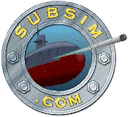|
|
||
 War
at Sea War
at Sea
Author: Ronald H. Spector
When I came across Ronald H. Spector's At War at Sea: Sailors
and Naval Combat in the Twentieth Century I was more than a
little bit skeptical. It's a "general" history, and for some
reason, I've never really been fond of those. Sure, there's always
a time and place for books that condense huge swaths of history
into a convenient little 400 page package. But in my case,
I'd rather read a 600 page (or 800, or even 1,000 pages...) book
on a single subject, usually the kind of book most people would
find stodgy and tedious.
At War At Sea falls in the middle of those two extremes, in that it's richly detailed and complex, while at the same time cramming in as much history as can be humanly crammed into 398 pages (minus the bibliography, notes, index, and all that other good stuff). In AWAS, Spector attempted to create a complete one-volume study of the evolution of naval warfare in the 20th Century, focusing on the American, British, Japanese, Russian, and German navies. Did he succeed? Well...almost. The evolution of naval warfare in a nutshell? In the Napoleonic era, two opposing fleets might have five hours to plan a battle strategy. By World War I, that time had dropped to as little as five minutes. In the era of radar, guided missiles, and sophisticated electronic countermeasures, a commander might have five seconds to react to an incoming missile or torpedo. Surely, the unstoppable march of technological advancement can't be the only reason for these breathtaking advances. What about the men behind the machines? Spector's motivation for writing AWAS came from his prolonged frustration with historians who, having chosen to focus solely on the technological aspects of naval warfare, completely ignored the human factor. Instead, Spector focuses on the relationship between naval technology and it's human operators. For example, in discussing the Battle of Jutland, he notes that the outcome of the battle had more to do with the organization, training, and judgment of individual sailors than with armor protection or the size and muzzle velocity of the battleships' guns. AWAS opens in 1905 with the Battle of Tsushima, a little known confrontation between the Japanese and Russian navies that nonetheless had a massive impact on the course of world history. On paper, it seemed like an even match - the Russians had twice as many battleships as the Japanese, who had dozens of destroyers and torpedo craft. Had the two fleets been commanded by automatons of equal strength and intelligence, the battle might have ended in a bloody stalemate. In the end, the Russian fleet was destroyed (21 ships sunk and seven captured, versus three Japanese torpedo boats sunk) by a supposedly "backwards" island nation. European naval observers at the battle were stunned. The reason why the Japanese won at Tsushima simply because they had better sailors, while the Russians relied on poorly trained conscripts on the verge of mutiny. In end, having "better" ships and weapons didn't make a difference when the Japanese knew how to use their inferior equipment. Spector breaks his book into sixteen chapters, each of which covers a separate and important element in the evolution of navies in the 20th century. Chapter 2 describes the training of British sailors in the early 20th century, Chapters 7 and 8 detail the introduction of aircraft carriers and naval air power, Chapter 12 the Battle of the Atlantic, Chapter 15 the Cold War and the first nuclear-powered submarines, and so on. Most of Spector's research came from first-hand accounts by participants of the events described in the book - mostly letters, diaries, and personal journals, rather than published material. Some of the accounts are extremely lucid, particularly those from British sailors undergoing constant air attack off of Crete while attempting to evacuate Allied armies from the island, and from PBR and Swift Boat veterans of the Vietnam War. Spector also goes into extensive detail on recruiting practices, life on board, the social makeup of the Navy and the reasons why men chose to join to begin with. AWAS isn't a blow-by-blow account of every single naval battle since Tsushima, nor is it a detailed sociopolitical history. It's actually somewhat schizophrenic, rendering Spector's writing somewhat hard to follow at times. Like a lot of modern-day American historians, he sometimes comes across as politically correct for the sake of being politically correct. The problems of racial integration in the US Navy receives more coverage than the entire Battle of the Atlantic, which is described as a "scratch team" (I think the average U-boat man, post-May 1943, would be a little surprised to hear they were fighting against a "scratch team!") winning against a small elite. The Americans are bold and resourceful, the Germans are fanatical Nazis, the British are just along for the ride...Isn't that just a little trite by now? Worst of all, the narrative comes to a screeching halt in the late 80s. Of course, there haven't been any naval battles fought since then, but something interesting must have happened between then and 2001! At War At Sea is fascinating in places, but can also be jarringly uneven. It would have been better if Spector had written with a little more focus and fleshed out the Cold War era a bit more. I recommend it to anyone with a serious interest in naval history, even if it gets a little confusing at times. At War At Sea was originally published in 2001 by Viking Penguin as a 480-page hardcover book. There are 16 chapters, along with several maps and a 16-page section of black & white photographs. The author is a professor of history and international relations at George Washington University. His books include After Tet and Eagle Against The Sun.
|

